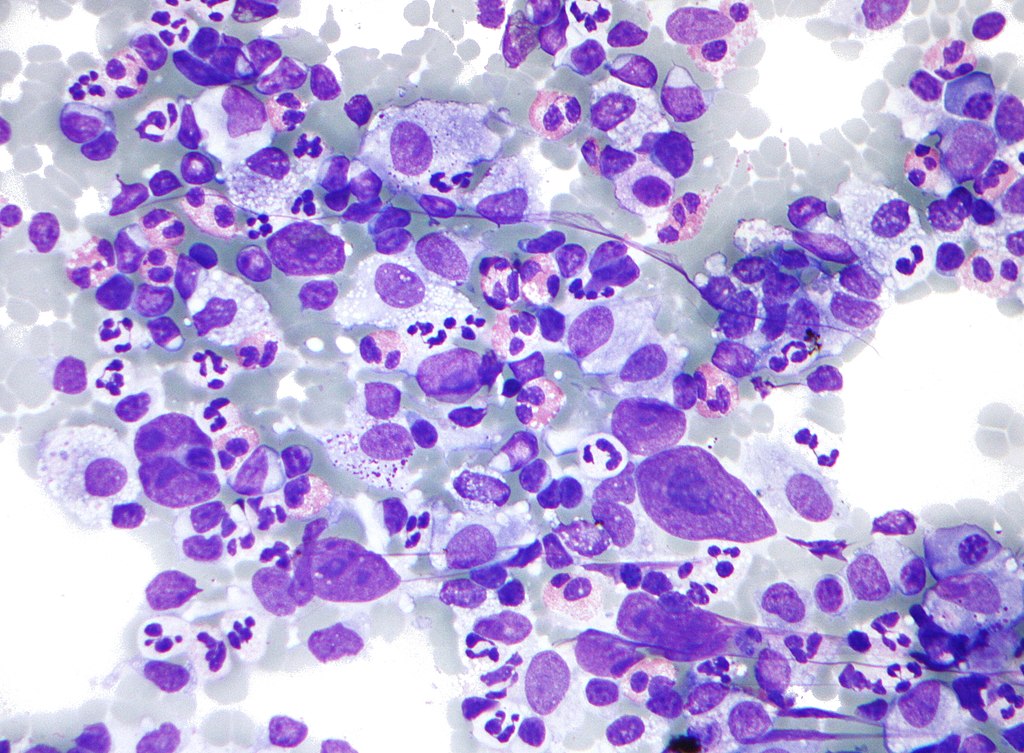Inherited Genetic Variants Increase Risk of Hodgkin Lymphoma
Posted on 14 Sep 2022
Hodgkin lymphoma (HL) is a type of lymphoma, in which cancer originates from a specific type of white blood cell called lymphocytes, where multinucleated Reed–Sternberg cells (RS cells) are present in the patient's lymph nodes. Symptoms may include fever, night sweats, and weight loss. Often, nonpainful enlarged lymph nodes occur in the neck, under the arm, or in the groin.
HL must be distinguished from non-cancerous causes of lymph node swelling and from other types of cancer. Definitive diagnosis is by lymph node biopsy. Blood tests are also performed to assess function of major organs and to assess safety for chemotherapy. Familial aggregation of HL has been demonstrated in large population studies, pointing to genetic predisposition to this hematological malignancy.

A large team of hematology and oncology experts collaborating with St. Jude Children's Research Hospital (Memphis, TN, USA) performed whole genome sequencing on 234 individuals with and without HL from 36 pedigrees that had two or more first-degree relatives with HL, one of whom needed to be younger than 21 years of age when diagnosed. The team created pedigrees, a type of diagram that reveals familial connections while tracking the incidences of cancer.
A powerful bioinformatics pipeline created at St. Jude was essential to analyzing and tracking the variants through the family pedigrees. The process included running algorithms to identify the variants in every individual, and then taking the pedigree and tracing the variants back through the family tree to figure out which ones were related to the cancer. More than 40 annotation databases and pieces of software powered the effort, which resulted in a fast, robust pipeline to analyze familial data.
The investigators used tiered variant prioritization algorithm, and identified 44 HL risk variants in 28 pedigrees, of which 33 are coding, 11 are noncoding. The top four recurrent risk variants: a coding variant in KDR (rs56302315), a 5'UTR variant in KLHDC8B (rs387906223), a noncoding variant in an intron of PAX5 (rs147081110), and another noncoding variant in an intron of GATA3 (rs3824666). A newly identified splice variant in KDR (c.3849-2A>C) was observed for one pedigree and high confidence stopgain variants affecting IRF7 (p.W238*) and EEF2KMT (p.K116*) were also observed. Multiple truncating variants in POLR1E were found in three independent pedigrees as well. While KDR and KLHDC8B have previously been reported, PAX5, GATA3, IRF7, EEF2KMT, and POLR1E represented novel observations.
Jun J. Yang, PhD, co-corresponding author of the study, said, “Inherited variants can be an important missing piece of the puzzle when you're trying to understand why certain people are more likely to get a type of cancer. Whole genome sequencing that allows you to look beyond the main genetic variants to the non-coding or epigenetic variants is a powerful tool to help explain what puts a person at a higher risk of developing Hodgkin lymphoma.”
The authors concluded that their analysis revealed inherited variants likely to predispose individuals to the disease in most of the families, highlighting the important role of genetic predisposition in understanding Hodgkin lymphoma. The study was published on August 17, 2022 in the journal Blood.
Related Links:
St. Jude Children's Research Hospital














